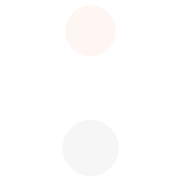Building a Product Brand Language

1 | Translating your Company’s DNA
Branding is generally looked at as involving work around the logo, communication tools, packaging, and typography of a company. Many fail to recognize the important role that a product line plays in the brand identity; too often a company just put their logo on off-the-shelf solutions. A solid product design language is an integral part of your overarching brand strategy as it is a powerful interaction tool with your target market and it must represent a company’s brand strategy at its core.
One can interpret a product design language as a specific visual alphabet of design attributes which communicates a company’s values and character through compelling user-centric, innovative and aesthetic elements. This alphabet translates a company’s DNA into tangible physical aspects, such as form, detail, material, color and more elusive ones such as memorable experiences and brand personality.
Product branding also creates trust in your product portfolio as it instills in consumers a sense of confidence and familiarity. Users have grown more sophisticated and recognize that building a consistent product line is far more complex than developing a ‘one-off’ device. The fact that your organization can do so time and again demonstrates that you are premium and a market leader.
In short; your products have to be brand ambassadors that create hyper-believability and loyalty.
2 | Product Branding as an Asset
As explained in the introduction, a strong product brand language is an essential part of your market and business strategy but it is also an asset to your organization. Sound product language guidelines will help in shortening product development cycles as well as managing the complexity of consistency between often self-governing departments.
Maintaining Brand harmony is essential. When the scope of a project (or company) begins to grow, the complexity of different teams having to communicate on many factors of development also grows exponentially. An overarching design guideline helps in aligning different divisions thus greatly enhancing cross-function consistency and interdisciplinary management efficiency.
Furthermore, a common product design language will also free up your design team to innovate more efficiently as it takes care of repetitive, though important, components such as signature elements, material use, market positioning, and regulatory governance.
A solid Product Brand Language (PBL) also improves efficiency when managing outsourced manufacturing projects. The guidelines will train your suppliers to develop product proposals within your brand strategy by adhering to the signature elements and design principles of the PBL; and they will do so much faster.
A well implemented PBL program will also substantially extend product life and highly increase the return on your investment. One of our clients in the computer gaming industry has been using the PBL we designed for them for more than 7 years (and counting); in doing so they keep dominating the market while strengthening brand awareness and customer loyalty.
3 | How to Create a Product Brand Language (PBL)
Each PBL is extremely unique as it reflects the brand values of a singular organization. Therefore it is impossible to itemize how to build a proper PBL but we will explain the general framework in the following paragraphs.
It is crucial that the design team understands the core values of the company; they are the abstract, timeless protocol that covers the internal and external advantages of an enterprise, the highest values that guide your company’s actions and unite your employees. We analyze these ideals by setting up companywide interviews, evaluating proprietary technologies and materials, and gauging market perceptions.
Once schooled, the design team maps design onto the values of the company to create a visual representation of the brand using mood boards, abstract shapes, textures, pictures and even other products on the market. This is an iterative process including brainstorming, client meetings and fine tuning. Once consensus is reached designers convert those aesthetic visual themes into a PBL with a hierarchy of brand attributes, design principles and signature elements that communicate the brand’s personality.
The more complex your product portfolio is, the more flexible your Product Brand Language needs to be. Complexity is counterproductive to consistency and consistency is essential to the success of a PBL. Therefore superior Product Brand Languages do not dictate; they are guidelines but cannot be rules. The Product Brand Language should provide direction to designers; become a communication tool for project managers and a guide to evaluating the success of your brand expression.
At CRE8 DESIGN we incorporate PBL flexibility by layering the brand language. This is achieved through setting up the following implementation layers:
(1) Signature elements reinforce the brand values and are a ‘must-have’. Generally they consist of 2 to 3 core attributes that can be applied across the entire product portfolio.
(2) Design principles help in maintaining consistency in your company’s output where possible. Aim to implement at least 2 or 3 design principles to a product depending on manufacturing feasibility, cost, and market input.
(3) Hero products must always follow the PBL as rigorously as possible as they are brand ambassadors.
The PBL is always supported by a scalable and extensible Product Brand Codex that explains how signature elements and design principles can be executed throughout a company’s product output. The toolkit uses hero products to explain how to apply attributes and it specifies a collection of DOS-and-DONTS to promote consistency across your organization. The Manual is accompanied by color, material and finish sample plates that facilitate conformity. Sometimes the PBL can also be extended in other visual disciplines such as packaging, user interface and even company branding.
4 | Our Experience
Over the past two decades CRE8 DESIGN has gained extensive experience in designing game-changing Product Brand Languages that are inspiring and generate market momentum. We have cooperated with DELL, CORSAIR, BEST BUY, XYZ PRINTING and many more to build PBLs that keep exceeding expectations and dominating the market for years to come.



